Week5
Reflections and responses to the Week 5 Artificial Lighting Workshop
-
Task 1
- Double Asymmetric
This luminaire probably has a spacer attachment in the middle, which illuminates the beam in two symmetrical but incomplete circles, with a softer overall beam edge.
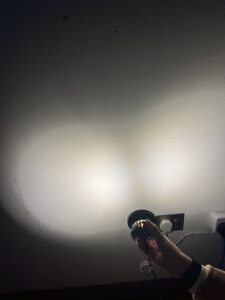
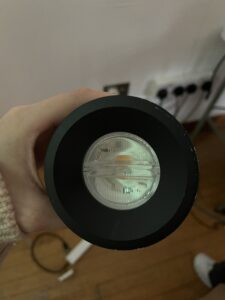
2. Extra Wide Lens
This luminaire shines over a larger area and the rounded edges of the light are more pronounced and sharp.

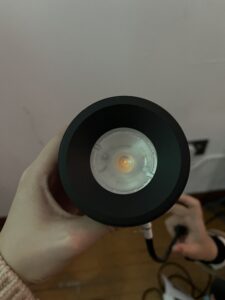
3. Wide Lens
In contrast to the former, the beam of light has a clear transition in intensity, with a stronger beam in the centre and then diminishing in all directions, with a softer transition.
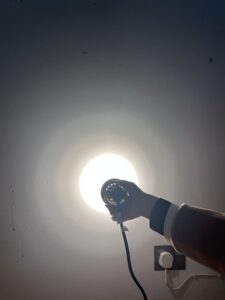

4. Dark Wide Lens
This luminaire seems to use an orange peel reflector, the beam quality of which is similar to that of the second extra wide lens, but the colour is darker and warmer.

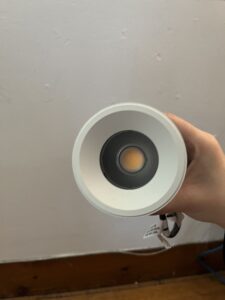
5. Oval Lens
This luminaire has an oval attachment in the centre, allowing the light to converge within this oval shape, which leaves a distinct oval ring in the centre of the wall when illuminated close to the wall and a sharper beam, while the overall beam is softer when illuminated away from the wall.
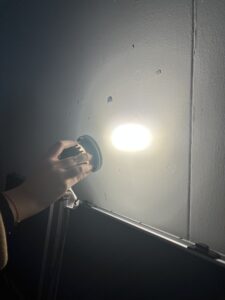

-
Task 2
- Extra wide lens
The first time it was illuminated almost close to the wall with no offset, there was a clear circle of light near the luminaire and a clear variation in the intensity of the beam, the beam spread was wide and the surface texture on the wall was clear and clearly appeared rougher.
The second time the light is shifted by about 10cm, there is no visible circle on the wall, but there is a clear beam intensity zoning at the top, the overall beam spread is more dispersed than the first time, and the surface texture on the wall appears softer.
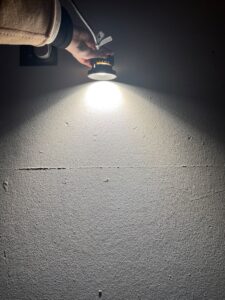

2. Asymmetric
The first irradiation is almost close to the wall without offset, without forming a particularly obvious and bright aperture area, the beam shape is not obvious, the surface texture on the wall appears clearer and rougher, but the surface texture is not very obvious and abrupt compared to the lens luminaire.
The second irradiation offset is about 10cm, forming a clear parallel line of light on the wall, which is also the dividing line between light and dark, and can better complete the effect of wall washing.The beam shape is distinctly different from that of the wide lens luminaire, the overall beam spread is more even, unlike the wide lens luminaire where there are variations in the intensity of the light, and the surface texture on the walls is more subtle and soft.
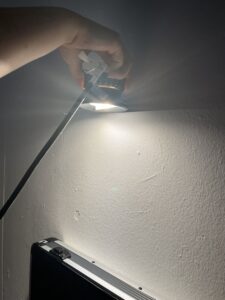
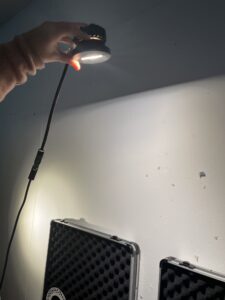
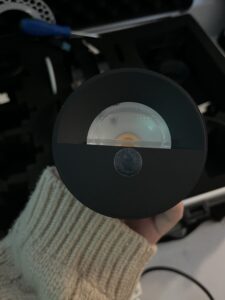
-
Task 3
When the same group of items is illuminated by the warm white light, the colours of the items are normal and bright, and the fruit looks fresh, while with the cool blue light, the appearance of the items is somewhat blurred and they lose their original texture.
At the same time the colour and vibrancy of the items are noticeably different, with the originally square red cloth shoes turning a dark red in the blue light, the originally orange tangerines turning a brilliant red, the yellow lemons looking a little orange with a hint of dark purple, and the green apples turning a reddish brown.
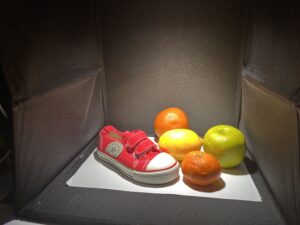
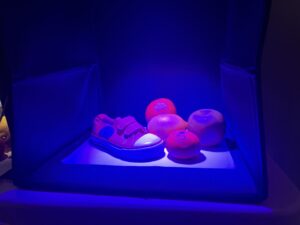
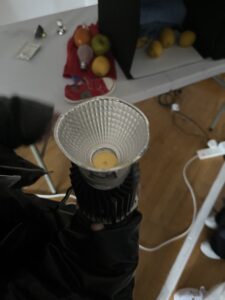

-
Task 4
- DEZZI PINHOLE XOB- spot lens
The luminaire is approximately 108mm in diameter and between 71-132mm in length.
The luminaire has no trim and is finished in black Trim Colour. According to the mounting instructions on the website, the luminaire is flush mounted, either by connecting the mains driver and placing it through the ceiling cut-out. plate to the mounting ring and fix it with screws.
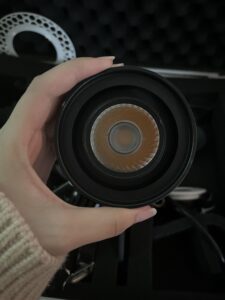



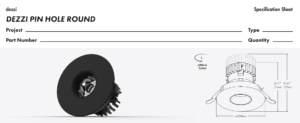
2.DELTALIGHT- White downlight
https://www.deltalight.com/en/products/light/spy/spy-39-trimless-in?form=searchForm&reference_nr=&location=1&fixation=1&assembly=2&new=&is_essential=&type=light®ion=int&is_deco=0
I found a similar model of this luminaire on the website, which is an angle-adjustable tube spotlight, commonly mounted with the base fixed directly to the ceiling in a surface mount, but I see on the website that it is also possible to hide part of the tube into the ceiling for recessed mounting. The luminaire shines with a strong sense of glare, probably due to its higher wattage.
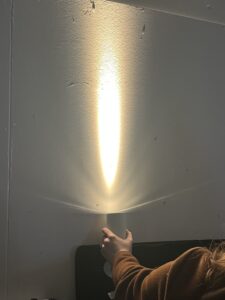


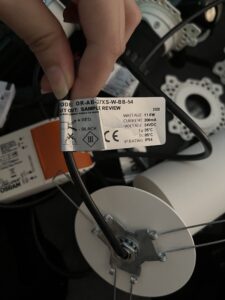
3.Spotlights with trim
https://www.lumenpulse.com/products/2628/lumencore-nano-shower-rated
I looked for similar luminaires on the website for comparison, the luminaire is approximately 110mm in length and 60mm in diameter, the overall luminaire is slender with a lace decorative edge, the recessed installation method with trim is used in the installation, it is not equipped with soft light lenses and other accessories, the central light is more concentrated with a certain sense of glare.
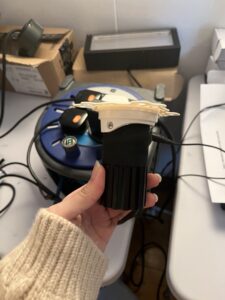
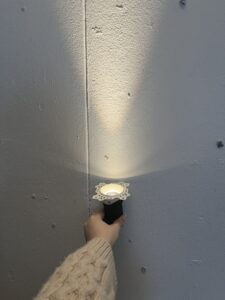
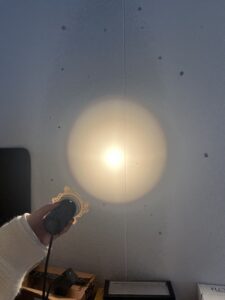
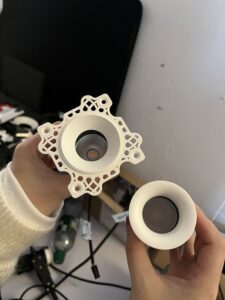





Recent comments